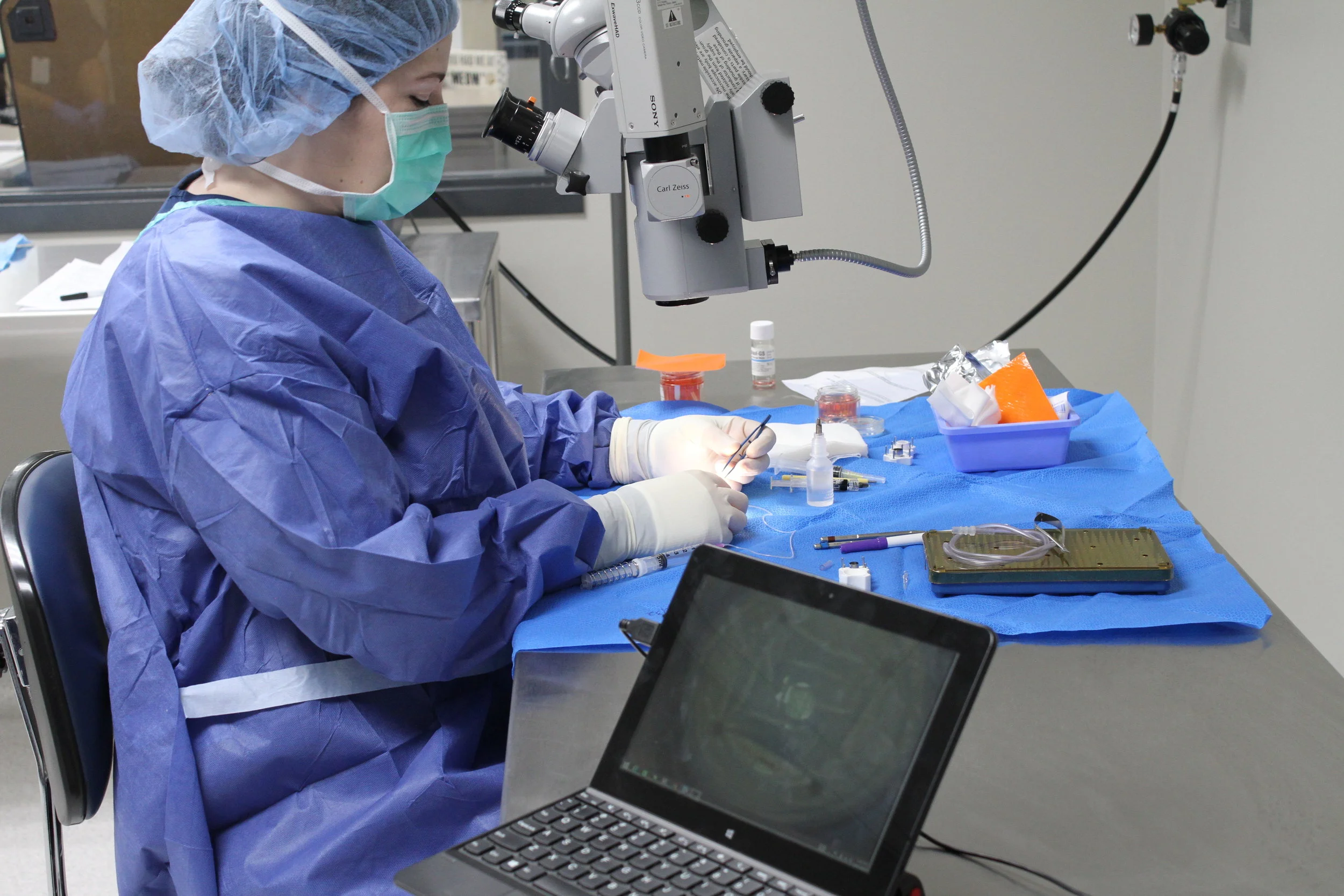KANSAS CITY, Mo. – More than a decade after moving to the Kansas City metro area, Saving Sight has a home to call its own.
For those that regularly travel on Interstate 29, you may have seen the company’s sign shining bright at night in green and blue on the east side of the road, just south of the NW 112th Street exit.
CODY THORN/Citizen photo
Saving Sight, a nonprofit organization, recently moved into its new headquarters at 10560 N. Ambassador Drive, Suite 210, a short move north from their previous location also on Ambassador. The company founded in 1960 gathers cornea tissues for transplants throughout Missouri, Kansas and Illinois.
After the sign was installed in January, CEO Tony Bavuso noted that his company was getting a lot of calls, asking what exactly that business is.
In a nutshell, the non-profit organization changes lives by helping in the process of cornea transplants. Over the course of a year, the company helps more than 3,000 people gain sight through transplants.
“It is amazing how many people we have heard from commenting about it,” Bavuso said. “Seeing it (the sign) is another great perk. We weren’t allowed to have outdoor signage at the other space, so this provides more visibility in the community. This is a community organization we exist to serve to serve the community.”
Saving Sight first opened an office in Kansas City in 1995. Then, 20 years later, the company’s headquarters moved from Columbia to Kansas City. The company purchased a suite at 10560 N. Ambassador Drive, a much shorter move — about a ¼ mile — from their previous location also on Ambassador.
The company has been around since 1960 and currently has four other offices in the Midwest — Springfield, Columbia and St. Louis in Missouri and in Springfield, Ill.
The Kansas City location first started just inside the Kansas state line off of Interstate 35 before moving to Gladstone. A move to KCI corridor followed and in December, the new headquarters were established in suite that is 18,094 square feet, between a Montessori school and a dentist office.
The chance to stop paying rent and to own a location became a win-win situation for the company and Bavuso, who became the CEO in 2013.
The space had sat vacant for 10 years and when Saving Sight first took over, gravel floors were still inside the door and aside from a few walls that were constructed for a temporary office a decade ago, it was a blank slate.
In previous locations some modifications were allowed, but there were some limitations. Now, Saving Sight had a chance to design a location that would allow for interaction between the many departments.
By the end of June, the headquarters will have close to 70 employees after about 20 employees will transfer to Kansas City from Columbia as the 24-7 call center shifts locations.
The call center is the first step of many that turns a tragedy for one family to a joyous occasion for others. Saving Sight has a service agreement with most hospitals in Missouri, Kansas and Illinois.
When someone dies, hospitals are required to call the death in for people on the organ donor registration, which includes eye donations. Usually, the 24-7 call center gets notice within an hour and the process moves rather quickly. Being an organ donor is consent and a technician, on call every hour of every day, is requested to perform surgery for the removal of the cornea tissue either at the hospital or a mortuary after the family is notified.
“If a cornea is able to be transplanted, we get it transplanted, that is what the donor wanted when they made the decision to donate,” Bavuso said. “We will do what we need to do to get that tissue transplanted.”
If someone isn’t on the organ donor list, the organization calls and asks for consent for an eye donation.
“If you want to be a donor, let your family know,” Bavuso said. “It is usually a terrible burden for the next of kin to figure it out.”
Saving Sight works closely with local organ banks to help educating possible donors about the options of eye transplants.
Bavuso started his career at Saving Sight as one of the technicians in 1998, working his way up the ladder to his current job.
The experience makes him keenly aware of the importance in timing of the surgery.
After the recovery, the tissue is refrigerated and it is good for 14 days, but most are shipped off to patients in need within a few days — usually as soon as the background and infectious disease testing are complete. Donors usually range between the age of 2 to 75, according to Bavuso, as more people are able to donate corneas easier than other major organs.
Local demands for the tissue are met first before being shipped across the United State or overseas. In the case of emergency need, the proximity to Kansas City International Airport is a big advantage.
Cornea transplants are usually scheduled a week or two in advance, so Saving Sight has an idea of the need. They are responsible for about 3,000 of the roughly 50,000 cornea transplants in the United States each year.
Contributed photo
“It is why I‘m here, why I do this,” Bavuso said. “I love the fact I can go home and at the end of every day, I helped, on average, seven people’s sight every day.”
Saving Sight, with its onsite lab, is able to cut the tissue to the specifications of the surgeon, saving a step along the transplant chain. The organization builds relationships with hospitals throughout the area, but the biggest thing that has been built over the years is trust.
“They trust greatly in our ability to prepare tissue exactly like they want it,” Bavuso said. “It is a really unique relationship.”



